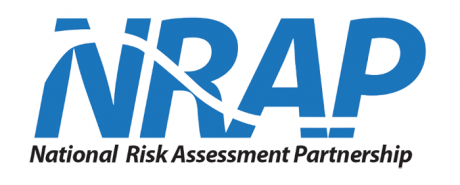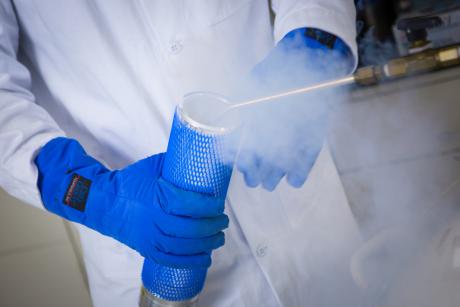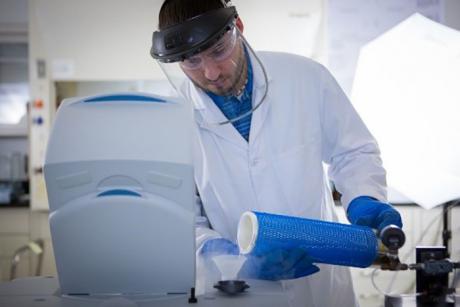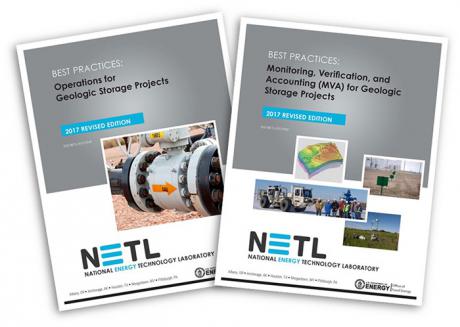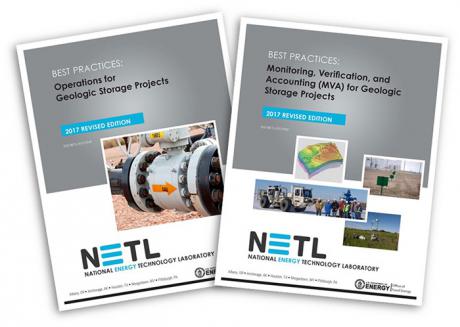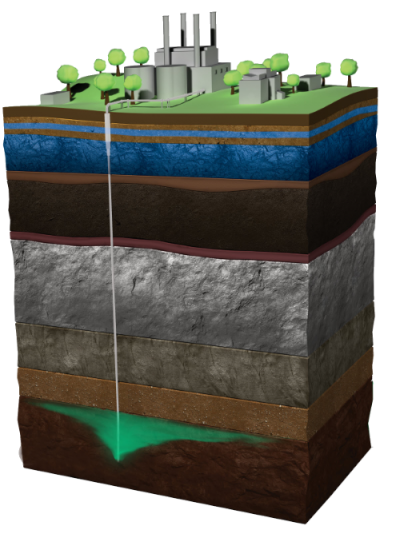Market demand for low-carbon energy is growing, and geologic carbon storage (GCS) is a technology that can enable continued and sustainable use of abundant fossil energy resources. Ensuring that GCS can safely and effectively store large volumes of anthropogenic CO2 away from the atmosphere for thousands of years requires a solid understanding of the subsurface and a thorough understanding of potential environmental risks and how those risks can be mitigated and avoided.
The Archer Daniels Midland Company (ADM) officially opened their Illinois Industrial Carbon Capture and Storage (ICCS) project during a ceremony today at the National Sequestration Education Center at Richland Community College in Decatur, Illinois.
In a cross-disciplined approach, NETL researchers explore biogeochemistry and chemical reactions to help develop more effective ways to store carbon dioxide (CO2) underground and enhance production of oil and natural gas, all while protecting the environment for future generations.
In recent years, advances in horizontal drilling and hydraulic fracturing have accelerated the extraction of natural gas from shale formations, ushering in a new era of energy productivity. But, once areas have been depleted of their hydrocarbons, is there a good use for the fractured shale formations left behind? NETL researchers are using complex experiments to determine if the formations can accommodate a new role as a reservoir for carbon dioxide (CO2) captured from fossil fuel burning power plants and other industries.
The U.S. Department of Energy’s (DOE’s) National Energy Technology Laboratory (NETL) has announced the release of the final two of five 2017 revised edition best practice manuals for geologic carbon storage projects. Together, the five interconnected manuals provide a holistic approach to carrying out a geologic storage project, from inception to completion.
The U.S. Department of Energy’s (DOE’s) National Energy Technology Laboratory (NETL) has announced the release of the final two of five 2017 revised edition best practice manuals for geologic carbon storage projects. Together, the five interconnected manuals provide a holistic approach to carrying out a geologic storage project, from inception to completion.
The U.S. Department of Energy's (DOE) Geothermal Technologies Office (GTO) and the Office of Fossil Energy (FE) announced the selection of 5 projects to receive up to $15 million in funding to investigate wellbore integrity research subjects via a Lab Call announcement. This funding opportunity will address two topic areas: 1) Wellbore Diagnostics and Integrity assessment in legacy wells, and 2) Sensors and Tools for Autonomous Completions and Long Term Monitoring of Wellbore Integrity.
The U.S. Department of Energy’s Office of Fossil Energy (FE) and National Energy Technology Laboratory today announced the availability of $12 million to advance new geological carbon storage projects that enable safe, cost-effective, and permanent geologic storage of carbon dioxide (CO2). Two funding opportunity announcements (FOA), under FE’s Carbon Storage Program, will advance the development and validation of storage technologies associated with enhanced oil recovery operations or injection into a saline reservoir.
The Carbon Sequestration Leadership Forum (CSLF), an international, ministerial-level organization focused on the development of carbon capture and storage (CCS) technology, has selected the U.S. Department of Energy’s National Risk Assessment Partnership (NRAP), as a CSLF-recognized project. The CSLF chooses projects that contribute sufficiently to the advancement of CCS technology deployment. The organization has only recognized about 50 projects worldwide over the past decade.




